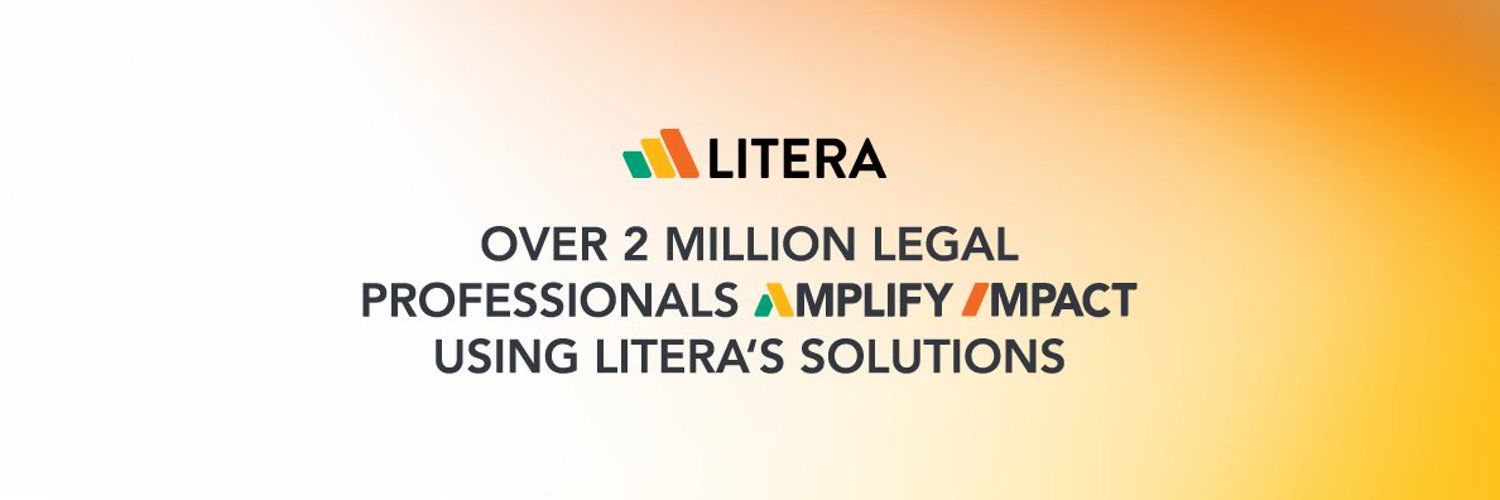
Litera Lito: Complete Buyer's Guide
The next evolution of agentic AI in legal
Litera Lito represents an ambitious entry into the agentic AI space for legal knowledge management, positioning itself as "the next evolution of agentic AI in legal" [36][37]. Built on Litera's 30-year legal technology foundation serving 2M+ daily users [36], Lito aims to function as a virtual team member spanning both practice and business operations through native Microsoft 365 integration and unified workflow management.
Market Position & Maturity
Market Standing
Litera brings 30 years of legal technology experience serving 2M+ daily users [36] to the rapidly expanding legal AI market, where adoption rates have tripled since 2023 with 30% of firms now using AI tools [2].
Company Maturity
Litera's established legal technology presence provides operational stability, while the agentic AI capabilities represent new product development requiring market validation.
Growth Trajectory
Growth indicators include beta customer engagement with leading global law firms [54] and planned general availability in October 2025 [36][39].
Industry Recognition
Industry recognition stems from Litera's established legal technology portfolio rather than Lito-specific validation.
Strategic Partnerships
Strategic partnerships center on Microsoft 365 integration [34].
Longevity Assessment
Litera's established legal technology foundation provides significant infrastructure capability and market credibility.
Proof of Capabilities
Customer Evidence
Beta customer engagement includes collaboration with leading global law firms to refine solutions for real-world needs [54].
Market Validation
Market adoption indicators show the legal AI landscape where AI adoption has tripled since 2023 [2].
AI Technology
Litera Lito's technical foundation centers on an agentic AI architecture that leverages Litera's existing product ecosystem to deliver autonomous task execution across legal workflows [36][37].
Architecture
The platform's architecture supports enterprise scalability while maintaining security and compliance requirements essential for legal organizations.
Primary Competitors
Primary competitors include Harvey AI, Thomson Reuters CoCounsel, and Paxton AI.
Competitive Advantages
Competitive advantages include Litera's 30-year legal technology foundation serving 2M+ daily users [36] and native Microsoft 365 integration [36][37].
Market Positioning
Litera's positioning as an agentic AI platform represents a strategic bet on workflow integration over specialized capabilities.
Win/Loss Scenarios
Win scenarios favor Lito when organizations prioritize unified platform benefits within Microsoft 365 environments [36][37].
Key Features
Pros & Cons
Use Cases
Featured In Articles
Comprehensive analysis of AI Knowledge Management for Legal/Law Firm AI Tools for Legal/Law Firm AI Tools professionals. Expert evaluation of features, pricing, and implementation.
How We Researched This Guide
About This Guide: This comprehensive analysis is based on extensive competitive intelligence and real-world implementation data from leading AI vendors. StayModern updates this guide quarterly to reflect market developments and vendor performance changes.
55+ verified sources per analysis including official documentation, customer reviews, analyst reports, and industry publications.
- • Vendor documentation & whitepapers
- • Customer testimonials & case studies
- • Third-party analyst assessments
- • Industry benchmarking reports
Standardized assessment framework across 8 key dimensions for objective comparison.
- • Technology capabilities & architecture
- • Market position & customer evidence
- • Implementation experience & support
- • Pricing value & competitive position
Research is refreshed every 90 days to capture market changes and new vendor capabilities.
- • New product releases & features
- • Market positioning changes
- • Customer feedback integration
- • Competitive landscape shifts
Every claim is source-linked with direct citations to original materials for verification.
- • Clickable citation links
- • Original source attribution
- • Date stamps for currency
- • Quality score validation
Analysis follows systematic research protocols with consistent evaluation frameworks.
- • Standardized assessment criteria
- • Multi-source verification process
- • Consistent evaluation methodology
- • Quality assurance protocols
Buyer-focused analysis with transparent methodology and factual accuracy commitment.
- • Objective comparative analysis
- • Transparent research methodology
- • Factual accuracy commitment
- • Continuous quality improvement
Quality Commitment: If you find any inaccuracies in our analysis on this page, please contact us at research@staymodern.ai. We're committed to maintaining the highest standards of research integrity and will investigate and correct any issues promptly.